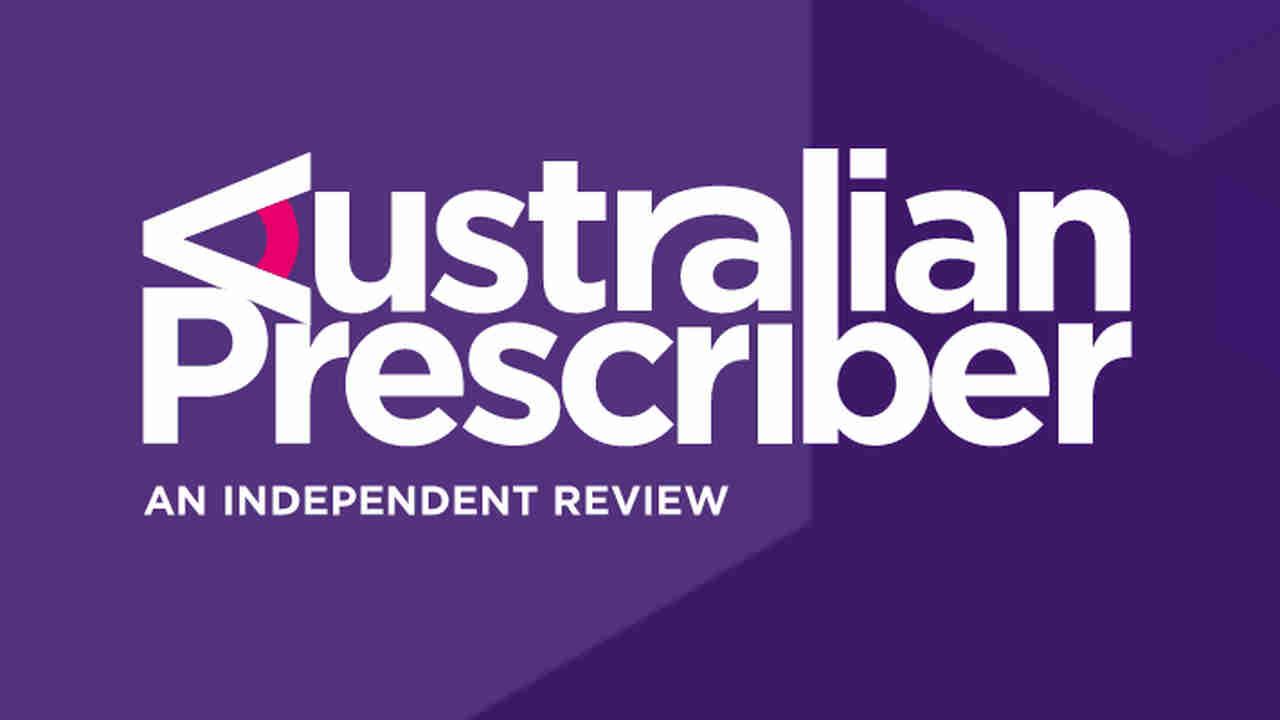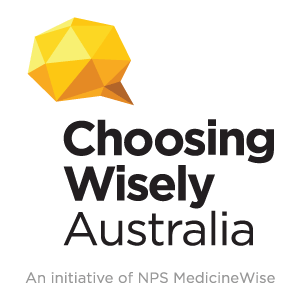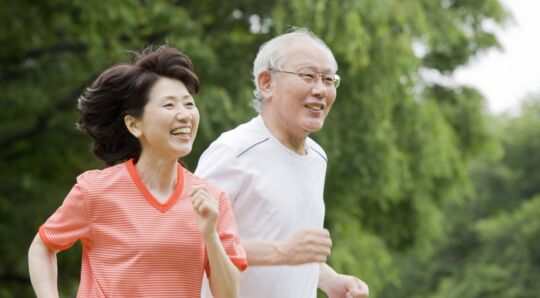Key points
- Osteoarthritis is one of the most commonly managed conditions in the primary care setting.
- Typical osteoarthritis can be diagnosed with history and physical examination.
- Imaging has a limited role in the diagnosis and management of osteoarthritis.
- Management of osteoarthritis has shifted from a traditional approach of pain control to core management strategies including education and information, weight management and physical activity.
- Opioids have a limited role in the management of osteoarthritis due to their limited benefits and a significant risk of harm.
Triamcinolone, cartilage loss and knee pain in osteoarthritis

Triamcinolone intra-articular corticosteroid injection is approved as an adjunctive, short-term treatment for pain relief in patients with knee osteoarthritis (OA). Long-term use is not supported by current evidence, including recently published 2-year clinical data showing that repeat intra-articular triamcinolone injections every 12 weeks, as used in clinical practice, lead to cartilage loss and do not reduce pain in patients with knee OA.
Medicinewise News: Osteoarthritis is an opportunity to promote weight loss with patients

Being overweight or obese is the single most important risk factor for knee osteoarthritis (OA). People who are obese are twice as likely to develop knee OA compared to non-obese people. And weight loss stands tall among OA management options, along with exercise and self-management. How can clinicians make the most of this synergy?

Find out about the key points of our 2017 Osteoarthritis program, and the changes in practice that we hope to inspire among health professionals in this area.
CPD options
In my practice: Q&A

Q&A with Dr Mel Deery, a GP in the ACT, answering questions on how she deals with diagnosis and management of osteoarthritis in her practice.
Australian Prescriber: Managing osteoarthritis

Shirley P Yu and David J Hunter
Aust Prescr 2015;38:115-19
Obesity is the most important modifiable risk factor, so losing weight in addition to land- and water-based exercise and strength training is important.
For your patients
Diagnostic and treatment guidelines
Therapeutic Guidelines Ltd. Rheumatology: Osteoarthritis. 2017
- The diagnosis of osteoarthritis is largely based on clinical assessment, which should include a thorough symptom history, physical examination, and functional and psychosocial assessment.
- Radiological findings of osteoarthritis are poorly correlated with osteoarthritis symptoms.
- All patients with osteoarthritis, irrespective of the stage of the disease, should receive education about the condition and advice on self-management.
- Exercise is important for all patients with osteoarthritis, irrespective of the affected joints or the stage or severity of the disease (including for patients awaiting surgery).
- Weight loss is recommended for all patients with osteoarthritis who are overweight or obese, irrespective of the affected joints or the stage or severity of the disease (including for patients awaiting surgery).
- Opioids have a very limited role in the management of osteoarthritis because of modest, if any, benefits and a significant risk of harms.
- Topical non-steroidal anti-inflammatory drugs (NSAIDs) and capsaicin can be considered as an adjunct to other treatment strategies and as part of short-term self-management.
- Both paracetamol and nonsteroidal anti-inflammatory drugs (NSAIDs) have a role in oral analgesia for osteoarthritis symptoms.
Some of the recommendations include:
- Diagnose osteoarthritis clinically without investigations if a person:
- is 45 or over and
- has activity-related joint pain and
- has either no morning joint-related stiffness or morning stiffness lasting < 30 minutes. - Offer accurate verbal and written information to all people with osteoarthritis to enhance understanding of the condition and its management, and to counter misconceptions.
- Agree individualised self-management strategies with the person with osteoarthritis including exercise and weight loss.
- Ensure that self-management programmes for people with osteoarthritis emphasise the recommended core treatments especially exercise.
- Advise people with osteoarthritis to exercise as a core treatment irrespective of age, comorbidity, pain severity or disability. Exercise should include local muscle strengthening and general aerobic fitness.
- Offer interventions to achieve weight loss as a core treatment for people who are obese or overweight.
- Healthcare professionals should consider offering paracetamol for pain relief in addition to core treatments.
- Paracetamol and/or topical non-steroidal anti-inflammatory drugs (NSAIDs) should be considered ahead of oral NSAIDs or opioids.
A clinical care standard for osteoarthritis of the knee developed by the ACSQHC in collaboration with consumers, clinicians, researchers and health organisations.
Recommendations include:
- Diagnosis of knee osteoarthritis is based on clinical assessment alone.
- X-rays are considered only if an alternative diagnosis is suspected.
- A patient with knee osteoarthritis receives education about their condition and treatments for it, and participates in the development of an individualised self-management plan that addresses both their physical and psychosocial health needs.
- A patient with knee osteoarthritis is offered support to lose weight, if they are overweight or obese, and advice on exercise, tailored to their needs and preferences.
- A patient with knee osteoarthritis is offered medicines to manage their symptoms according to the current version of Therapeutic Guidelines: Rheumatology (or concordant local guidelines).
Updated Osteoarthritis Research Society International (OARSI)guidelines developed patient-focused treatment recommendations for individuals with knee and hip osteoarthritis (OA) that are derived from expert consensus and based on objective review of high-quality meta-analytic data.
Core treatments for knee OA included arthritis education and structured land-based exercise programs with or without dietary weight management. Core treatments for hip OA included arthritis education and structured land-based exercise programs. Non-core treatments were rated as strong, conditional or not recommended. A treatment algorithm is also available in order to guide clinical decision-making.
This multidisciplinary guideline included 21 experts in osteoarthritis from 10 European countries who agreed on 10 recommendations for the non-pharmacological core management of hip and knee osteoarthritis using a Delphi consensus approach, including:
- All people with knee/hip osteoarthritis should receive an individualised management plan that includes the core non-pharmacological approaches.
- People with hip and/or knee osteoarthritis should be taught a regular individualised (daily) exercise regimen.
- Education on weight loss should incorporate individualised strategies that are recognised to effect successful weight loss and maintenance.
RACGP Guideline for the management of knee and hip osteoarthritis
RACGP first released guidelines in 2009, these updated guidelines present the best available current scientific evidence for OA interventions, covering all interventions other than joint replacement for the hip and knee.
Weight management services
GP-delivered services
- RACGP HANDI guide has useful tips on weight control.
- The Change Program is a weight loss toolkit consisting of a GP handbook, patient handbook and templates that interact with clinical software for appointment planning and recording. It is currently in development after pilot trial in 2016.
Public services available by referral
- Victoria Osteoarthritis Hip and Knee Service (OAHKS)
A multidisciplinary musculoskeletal clinic staffed by a musuloskeletal coordinator/physiotherapist and other staff, such as a rheumatologist, nurse practitioner or orthopaedic surgeon in many city and rural health areas. - Queensland Orthopaedic Physiotherapy Screening Clinic and Multidisciplinary Service (OPSC & MDS) Specialist outpatient services in 16 hospitals throughout the state. Contact your local hospital for details; for example, the Mater Hospital.
Private services available by referral
OA Healthy Weight for Life is a free service for hip and knee OA including portion control and meal replacement, physiotherapy-developed exercise program, support and advice. It’s available for members of certain private health funds in Australia. For a current list of participating Australian private health funds, and for eligibility criteria, please see the OA Healthy weight for Life website.
Choosing Wisely Australia

5 questions to ask your healthcare provider about tests or procedures
Ask these questions when considering whether to have an X-ray or MRI for diagnosis of knee or hip osteoarthritis
Research summary
Diagnosis and clinical criteria
| Reference | Results/ Recommendations |
|---|---|
| Zhang W et al. EULAR evidence-based recommendations for the diagnosis of knee osteoarthritis. Ann Rheum Dis 2010;69:483-489. | A EULAR taskforce developed evidence-based recommendations for diagnosis of knee osteoarthritis using a systematic review of research evidence and expert consensus. Three symptoms (persistent knee pain, limited morning stiffness and reduced function) and three signs (crepitus, restricted movement and palpable bony enlargement at the joint margin) appeared to be the most useful. The estimated probability of having radiographic knee osteoarthritis increased with increasing number of positive features, to 99% when all six symptoms and signs were present. |
| Altman E et al. The American College of Rheumatology criteria for the classification and reporting of osteoarthritis of the knee. Arthritis Rheum 1986;29:1039-49. | In adults aged > 40 years with usage-related knee pain, only short-lived morning stiffness, functional limitation and one or more typical examination findings (crepitus, restricted movement, bony enlargement), a confident diagnosis of knee osteoarthritis can be made without a radiographic examination. This applies even if radiographs appear normal. |
| Altman R et al. The American College of Rheumatology criteria for the classification and reporting of osteoarthritis of the hip. Arthritis Rheum 1991;34(5):505-514. | This multicentre study resulted in American College of Rheumatology (ACR)-endorsed diagnostic clinical criteria for the classification of patients with hip pain associated with osteoarthritis. Data was analysed from 201 patients who had experienced hip pain. A patient was classified as having hip osteoarthritis if pain was present in combination with either:
Radiological criteria were also included, however the ones discussed above are clinical. Using the clinical criteria for diagnosis yielded sensitivity similar to combined clinical and radiographic criteria with sensitivity and specificity for clinical criteria 86% and 75% compared with 89% and 91% for clinical plus radiographic criteria. |
| Sutlive T et al. Development of a clinical prediction rule for diagnosing hip osteoarthritis in individuals with unilateral hip pain. J Orthop Sports Phys Ther 2008:38(9):542-550. | This study examined the diagnostic accuracy of commonly used clinical examination procedures thought to be suggestive of hip osteoarthritis that may not have been considered by the ACR criteria. The purpose was to develop a clinical prediction rule that maximises the accuracy of diagnosing hip osteoarthritis based on clinical examination findings. The results were used to form 5 variables for the clinical prediction rule:
Having at least 3 out of the 5 predictor variables increased the likelihood of having hip osteoarthritis from a pre-test probability of 29% to a 68% post-test probability. If at least 4 out of 5 variables were present, the post-test probability increased to 91%. |
Imaging
| Reference | Results/ Recommendations |
|---|---|
| Sakellariou G et al. EULAR recommendations for the use of imaging in the clinical management of peripheral joint osteoarthritis. Ann Rheum Dis 2017; 0:1-11. | This guideline is an update of an earlier evidence-based guideline on the use of imaging in clinical management of osteoarthritis (including knee, hip, hand and foot) by the European League against Rheumatism (EULAR). A systematic literature review of 390 studies resulted in seven recommendations, including:
|
| Bedson J, Croft P. The discordance between clinical and radiographic knee osteoarthritis: a systematic search and summary of the literature. BMC Musculoskelet Disord 2008;9:116. | The systematic literature search identified the lack of agreement between the presence of knee pain and radiographic knee osteoarthritis. The proportion of people with knee pain that had radiographic osteoarthritis ranged from 15%–76%, and those with radiographic osteoarthritis with pain ranged from 15%–81% This demonstrates that radiographic knee osteoarthritis is an imprecise guide to the likelihood of knee pain or disability. Therefore, knee X-ray should not be used in isolation when assessing patients with knee pain. |
Health education and self-management
| Reference | Results/ Recommendations |
|---|---|
| Brosseau L et al. Ottawa panel evidence-based clinical practice guidelines for patient education programmes in the management of osteoarthritis. Health Educ J 2010;70(3):318-358. | A systematic literature search including 20 studies indicates the potential of patient education about osteoarthritis to positively affect pain, at least in the short term, and exercise compliance in the longer term. |
Weight loss
| Reference | Results/ Recommendations |
|---|---|
| Christensen R. et al. Effect of weight reduction in obese patients diagnosed with knee osteoarthritis: a systematic review and meta-analysis. Ann Rheum Dis 2007;66(1) 433-439. | A meta-analysis of randomised control trials (RCTs) assessing changes in pain and function when overweight patients with knee osteoarthritis achieve weight loss. Data analysis showed that disability could be significantly improved when weight was reduced > 5.1%. |
Exercise
| Reference | Results/ Recommendations |
|---|---|
| Fransen M et al. Exercise for osteoarthritis of the knee. Cochrane Database Syst Rev. 2015. | This Cochrane review of RCTs of land-based therapeutic exercise shows evidence indicates exercise reduced pain, using a pain scale, and improved physical function and quality of life. The treatment effect would be considered moderate to small but comparable with estimates for non-steroidal anti-inflammatory drugs (NSAIDs). |
| Fransen M et al. Exercise for osteoarthritis of the hip. Cochrane Database Syst Rev. 2014. | Pooling the results of 10 RCTs in this Cochrane Review demonstrated that land-based therapeutic exercise programmes can reduce pain and improve physical function among people with symptomatic hip OA. |
| Brosseau L et al. The Ottawa panel clinical practice guidelines for the management of knee osteoarthritis. Part one: introduction, and mind-body exercise programs. Clin Rehabil 2017;31(5):582-595. | A panel of experts reached consensus on recommendations for mind-body exercise programs for people with knee osteoarthritis. Various mind-body exercise programs are promising for improving the management of knee osteoarthritis:
|
| Brosseau L et al. The Ottawa panel clinical practice guidelines for the management of knee osteoarthritis. Part two: strengthening exercise programs. Clin Rehabil 2017;(31) 5:596-611. | A panel of experts reached consensus on recommendations for land-based strengthening exercises for people with knee osteoarthritis. Strengthening exercises alone and in combination with other types of exercise (coordination, balance, functional) demonstrated a significant improvement for pain relief, physical function and quality of life |
| Brosseau L et al. The Ottawa panel clinical practice guidelines for the management of knee osteoarthritis. Part three: aerobic exercise programs. Clin Rehabil 2017;31(5):612-624. | A panel of experts reached consensus on recommendations for aerobic exercise programs for people with knee osteoarthritis. Aerobic training exercises are generally effective for knee osteoarthritis within a 12-week period, demonstrating significant improvement in pain relief, physical function and quality of life. Aerobic exercise in combination with strengthening exercises showed significant improvement in pain relief and physical function. |

